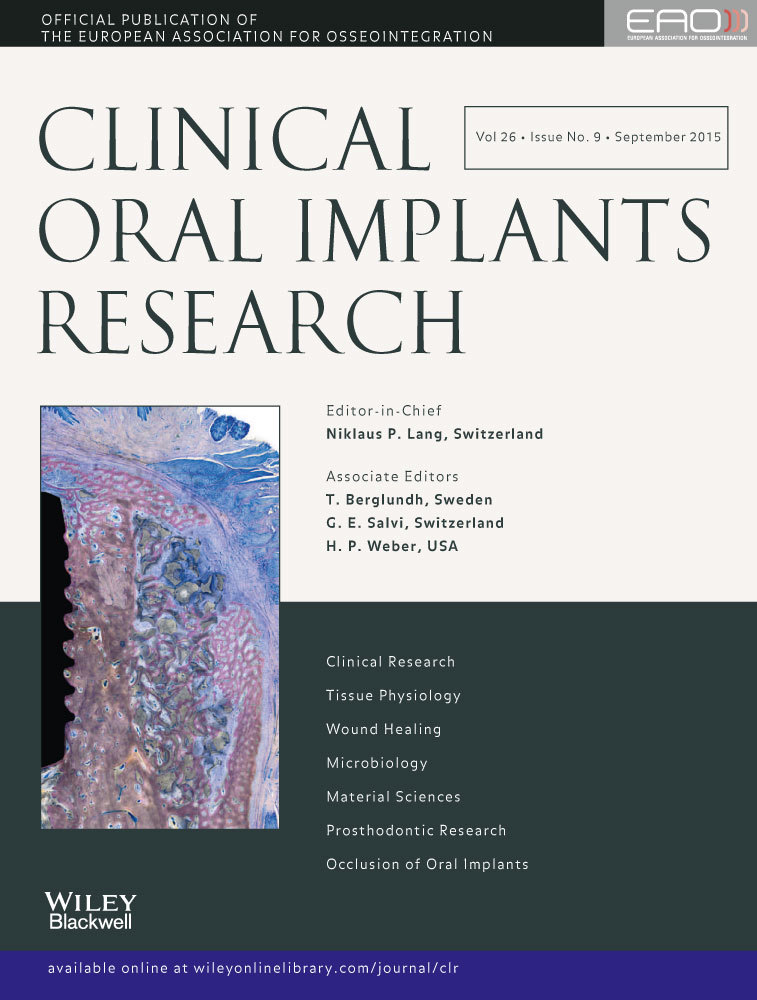Marginal bone and soft tissue behavior following platform switching abutment connection/disconnection– a dog model study
Abstract
Objective
The effect on the marginal peri-implant tissues following repeated platform switching abutment removal and subsequent reconnection was studied.
Material and Methods
Six adult female Beagle dogs were selected, and Pm3 and Pm4 teeth, both left and right sides, were extracted and the sites healed for 3 months. At this time, 24 bone level (BL) (Straumann®, Basel, Switzerland) Ø 3.3/8 mm implants were placed, 2 in each side on Pm3 and Pm4 regions. In one side (control group), 12 bone level conical Ø 3.6 mm healing abutments and, on the other side (test group), 12 Narrow CrossFit™ (NC) multibase abutments (Straumann®, Basel, Switzerland) were connected at time of implant surgery. On test group, all prosthetic procedures were carried out direct to multibase abutment without disconnecting it, where in the control group, the multibase abutment was connected/disconnected five times (at 6/8/10/12/14 weeks) during prosthetic procedures. Twelve fixed metal bridges were delivered 14 weeks after implant placement. A cleaning/control appointment was scheduled 6 months after implant placement. The animals were sacrificed at 9 months of the study. Clinical parameters and peri-apical x-rays were registered in every visit. Histomorphometric analysis was carried out for the 24 implants. The distance from multibase abutment shoulder to the first bone implant contact (S-BIC) was defined as the primary histomorphometric parameter.
Results
Wilcoxon comparison paired test (n = 6) found no statistically significant differences (buccal P = 0.917; Lingual P = 0.463) between test and control groups both lingually and buccally for S-BIC distance. Only Pm3 buccal aBE–BC (distance from the apical end of the barrier epithelium to the first bone implant contact) (P = 0.046) parameter presented statistically significant differences between test and control groups. Control group presented 0.57 mm more recession than test group, being this difference statistically significant between the two groups (P < 0.001).
Conclusion
It can be conclude, within the limits of this animal study, that the connection/disconnection of platform switching abutments during prosthetic phase of implant treatment does not induce bone marginal absorption. Furthermore, it may present a negative influence in the buccal connective tissue attachment that becomes shorter anyway preventing marginal hard tissue resorption, especially in thin biotypes.




